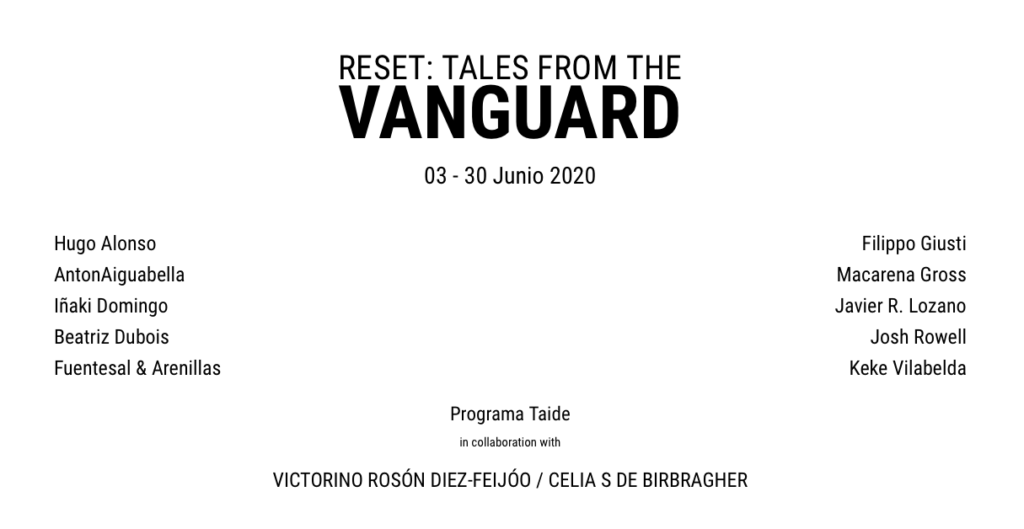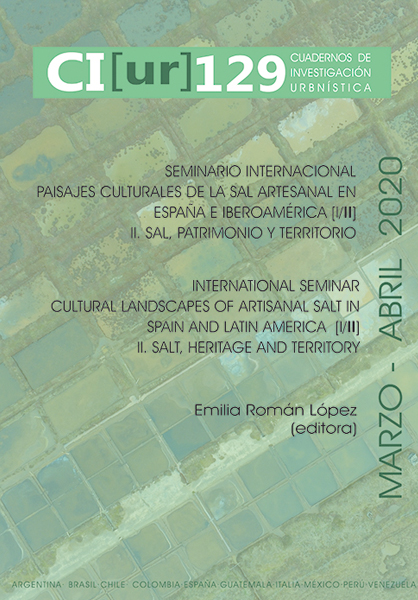PAISAJES DE LA SAL EN IBEROAMERICA
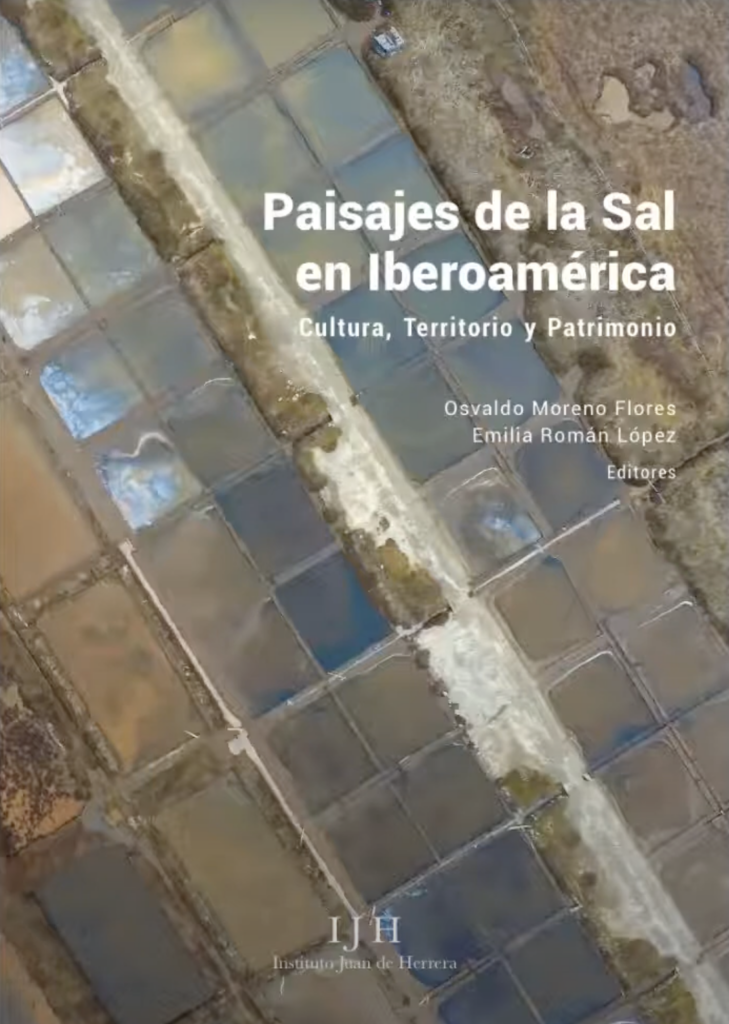
DESCRIPTORES:
Salinas / Paisaje / Fotografía / Arquitectura/ Estética / Andalucía
Hace un año (20-21 noviembre 2019) se presentaba el Seminario Internacional: Paisajes culturales de la sal artesanal en España e Iberoamérica, una iniciativa conjunta entre la Universidad Politécnica de Madrid y la Pontificia Universidad Católica de Chile. Dentro de esta convocatoria interdisciplinar, la muestra fotográfica Salinas. Paisaje de silencio funcionaba como reflexión sobre la relación entre paisaje y naturaleza inventada, sobre la importancia de la interacción íntima entre objeto y entorno y el valor espiritual de una composición plástica perpetuada, renovada, ensimismada a través del tiempo en el lugar de las salinas de Bonanza. Cada objeto interactúa con el espacio perfilando las distintas narrativas y semánticas que han ido enriqueciendo la cultura salinera y su paisaje. Esta consideración plástica del lugar producido a partir de la naturaleza como elemento arquitectónico es un ensayo de paisajismo romántico, actualizado, formulado desde la abstracción o la fragilidad formal. Conciencia orgánica y creación artística trascienden en una única forma de belleza. Las salinas, espacio intermedio, poseen la presencia de un lugar sagrado, sus montañas son tratadas como una arquitectura al límite de lo natural, inserto en lo trascendental.
Moreno Flores, Osvaldo, Román López, Emilia, Paisajes culturales de la sal en
Iberoamérica: cultura, territorio y patrimonio, (2021) Santiago de Chile. Instituto Juan de
Herrera. ISBN: 978-84-9728-591-9.
RECIPROCIUDAD
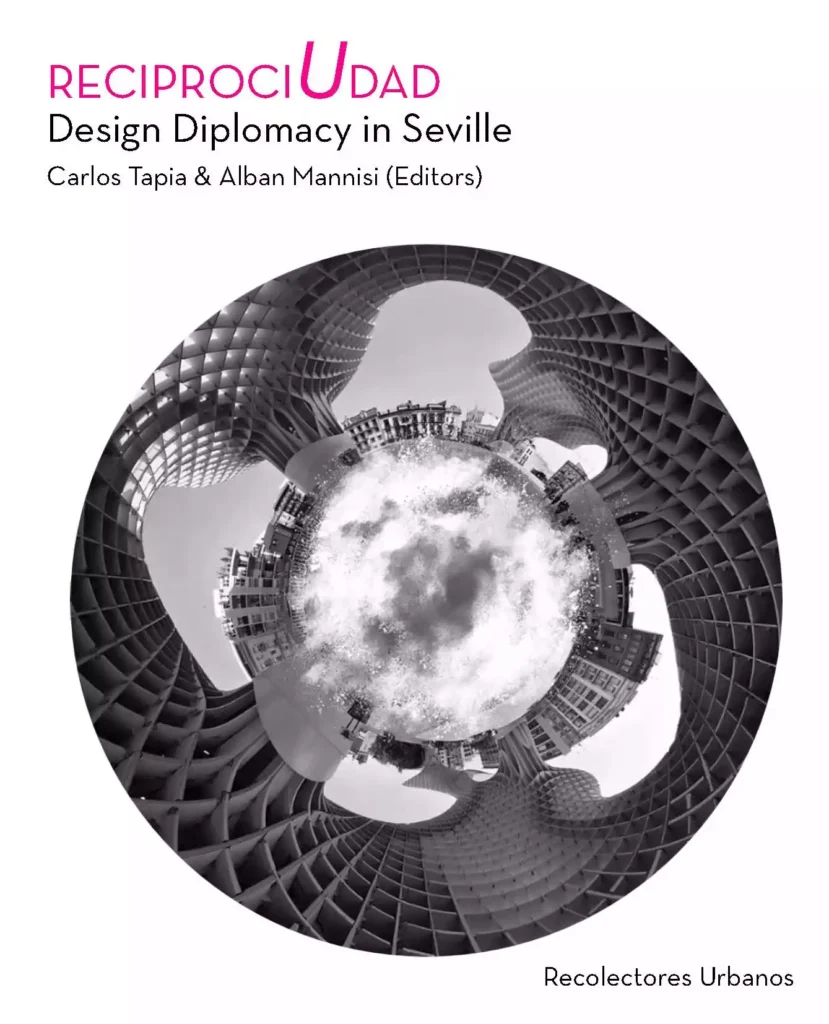
ReciprociUdad_Design Diplomacy in Seville contains a perspective developed between Carlos Tapia and I through our symposium held in Seville in 2020. The overall framework is an extension of the Design Diplomacy initiatives generated in collaboration with Charles Anderson. The seminar has attempted to probe the complex maturing of the hybrid Sevilla’s cultural landscapes, with a desire to decipher the fiery welcoming city that set me wondering at my last visit.
The Andalusian capital city resonates with many singularities. It remains a challenge to the usual socio-economic prediction made through the earlier crises. At the heart of the global economic crises of the past decade that hit Europe and especially Spain, the city of Seville shines as if these torments were irrelevant; its architectural heritage resplendent like few other European cities, its open spaces testifying to new landscape dynamic competing to blend its territorial legacy and environmental concerns, its social capital facing a growing tourist economy with profound dignity. At the time of social cohesion improvement and the difficult maintenance of intangible cultural landscapes identities, Seville presents an intriguing example of what is now called a Sustainable City.
Anderson, Charles, Carrascal Pérez, María F., Daitx, María C., Dening, Geraldine, del Espino Hidalgo, Blanca, Elmer, Simon, Fernández San Marcos, Paula, García Vázquez, Carlos, Górgolas Martín, Pedro, Gross Ariza, Macarena, Gutierrez, Miguel A., Hidalgo Sánchex, Francisco M. , de la Iglesia Salgado, Felix, Kaminer, Tahl, López-Canti, Jose Enrique, J. Mascort-Albea, Emilio J. , Mannisi, Alban, Minguet Medinaa, Jorge, Pelegrín Rodríguez, Marta, Pérez Blanco, Fernando, Prieto-peinado, María, Rey Pérez, Julia, Rodrigues Alves, Manoel, Sánchez-Fuentes, Domingo, Tapia Martin, Carlos, Reciprociudad. Design Dipolomacy in Seville. (2021), Málaga, Recolectores Urbanos
CORRALA, CORRALÓN. SPACES FOR CREATION AND MATTER TO CONSTRUCT IDENTITY IN SEVILLE’S HISTORIC DISTRICT
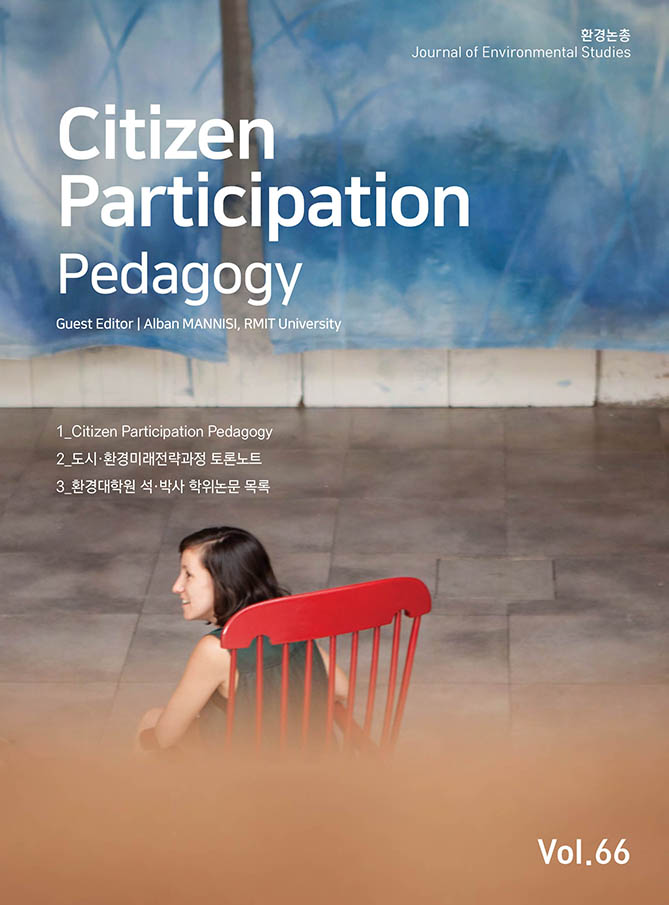
The corralas/ corralones [multifamily housing and workshops around a central patio], spaces for creation, key pieces of urban language and collective identity in Seville. Possibilities of adaptation and protection as symbolic heritage
Spread throughout the city, the corralas/ corralones[1] are a clear and functional element of identity as an essential piece of Sevilla´s urban language, that serve as a model for the study and knowledge of the local cultural production and its social implications, as well as for research of the urban question.
This concept of corrala has also been carried out in contemporary times to other types of fundamentally industrial spaces, where other species of corralas are constituted but with a less material sense of identity and which does not correspond to the same typology of house patio. Flexible spaces that in contemporary times, since the second half of the 20th century, have been absolutely ideal for creative activities and co-creation.
Those physical places of ordinary appearance, hidden behind the modern conception of landscape, like islands of silence, and shaped by the communities who inhabit them, who with their common actions, habits, traditions and encounters (that is, all the non-commercial relations that provide identity to a social group), define the territory.
These spaces constitute Ethnological Heritage in Danger. Given the private nature of these places and the continuous threat of disappearance conditioned by real estate pressures and other economic factors, this work aims to understand, from a historical and territorial perspective, the urban, anthropological, sociological and ecological dimension of these sites in order to consolidate a complete picture of their significance and to guarantee the survival of these unique and dynamic spaces of enormous social, cultural and urban value.
In order to justify this phenomenological study of the corralas, the specific case of “El Pelicano” has been chosen due to its popularity or prominence in the collective imagination and its impact as an urban mark. Interviews and a photographic work are main tools for this work. In addition to the documentation already written by other authors, the field work, through interviews and a photographic work, will be the fundamental tool for the development of this work.
[1] Corral, corrala, corralón, hereinafter any of these meanings will refer to the same concept.
Gross Ariza, Macarena, Abad, Reyes, Carrascal Pérez, María Fernanda:
Re-making ‘Corralas’: Spaces for Creation and Construction of Identity in Seville’s Historic District.
Proyecto fotográfico urbano de Macarena Gross con fotografía de portada.
En: Journal of Environmental Studies. 2020. Vol. 66. Pag. 240-269.
La tranquilidad habitual del campo parece trasladada a la ciudad. El silencio es ahora común en ambos lugares. Un silencio que resuena incómodo, a veces ajeno, pero necesario. Ya lo decía San Ignacio de Loyola, “en momentos de crisis, quietud”. La quietud, es el silencio del cuerpo.
Mientras, la naturaleza se apropia del paisaje urbano, creciendo sin límites, reclamando atención, un lugar, cuidados. Acotada o libre, finalmente asoma con la fuerza desafiante de sus finos tallos. Refugios de diversidad, como diría Clement en el Tercer Paisaje. Los valores intangibles de este nuevo paisaje son infinitos y en ocasiones suponen un viaje a lo más íntimo el ser humano, su memoria, sus deseos, sus emociones, su identidad.
“Todo era un clamor de corazones y miradas. Y el aire estaba lleno de lejanías, distancias, barrios, pueblos, riberas y llanuras de espigas y amapolas.” [1]
Quisiera imaginar un futuro rico en tiempo. He saboreado el lujo que significa poder disponerlo. ¿Qué prisa hay? Es el momento de detenerse y hacer inventario. A cada tiempo, un paisaje. Construído, deconstruído, reconstruído. Un paisaje silencioso, simplicidad elegante, donde la naturaleza es protagonista, la presencia humana relegada al corazón y la tecnología al servicio de la Tierra y de la humanidad.
Comencemos por los alimentos para combatir el cambio, diría Satish Kumar en su libro ¿Turistas o peregrinos? “Un peregrino es alguien que percibe la vida como un viaje sagrado, que ve la Tierra como un hogar sagrado, que interpreta el universo como un proceso”.
Cada día, un poco de silencio, trabajar con las manos y decir la verdad.
“The usual tranquility of the countryside seems to have been transferred to the city. Silence is now common in both places. A silence that sounds uncomfortable, sometimes alien, but necessary. As Saint Ignatius of Loyola said, ‘in moments of crisis, stillness’.
Stillness is the silence of the body. Meanwhile, nature takes over the urban landscape, growing without limits, demanding attention, a place, care. Bounded or free, it finally appears with the defiant force of its fine stems. Shelters of diversity, as Clement would say in ‘ The Third Landscape’. The intangible values of this new landscape are infinite and sometimes they imply a journey to the most intimate part of the human being, his memory, his desires, his emotions, his identity.
‘Everything was a clamor of hearts and looks. And the air was full of distances, neighborhoods, villages, banks and plains of spikes and poppies’ [1]
I would like to imagine a future rich in time. I’ve tasted the luxury of being able to arrange it. What’s the hurry? It’s time to stop and take stock. To every age, a landscape. Built, deconstructed, rebuilt. A silent landscape, elegant simplicity, like perennial wisdom, where nature is the protagonist, the human presence is relegated to the heart and technology is at the service of the Earth and humanity.
Let’s start with food to combat change, as Satish Kumar would say in his book ‘Tourists or Pilgrims’: «A pilgrim is someone who sees life as a sacred journey, who sees the Earth as a sacred home, who sees the universe as a process”.
«Every day, work with your hands and tell the truth.»
[1] Joaquín Romero Murube: Silencios de Andalucía (p. 241)
Cuadernos de investigación urbanística Ci[ur]129. Universidad politécnica. ETSA Madrid
Seminario internacional Paisajes culturales de la sal artesanal en España e Iberoamérica. Estrategias e instrumentos para la planificación y gestión del patrimonio cultural.
Salinas. Paisaje de silencio Salt flats. A silent landscape
DESCRIPTORES: Salinas / Paisaje / Fotografía / Arquitectura/ Estética / Andalucía
KEY WORDS: Salt flats / Landscape / Photography / Architecture/ Andalusia
RESUMEN:
La serie fotográfica Salinas. Paisajes de silencio presentada en el Seminario internacional Paisajes de la sal(UPM 2019) se inserta en un proyecto de investigación estética que busca retratar espacios pensados, diseñados para/desde el silencio dentro de los límites de Andalucía. Este conjunto de paisajes evocadores y cautos, estimula una percepción ajena a ciertos estereotipos culturales y estéticos vinculados, fundamentalmente, a la tradición urbana.
En el búsqueda intuitiva de estos espacios imprecisos, las salinas se convierten en objetivo clave por su fórmula paisajística natural, artesanal y su plástica cambiante. Las imágenes generan una ficción, un lugar idealizado y necesario donde la naturaleza es protagonista y la presencia humana relegada. Siguiendo un juego de sinestesias, una serie de objetos interactúan con el medio, evocando un sonido, un sabor, un estado, una historia y una luz. La serie está realizada por completo en las salinas de Bonanza de Sanlúcar de Barrameda (Cádiz).
ABSTRACT:
The photographic serie Salt flats. A silent landscape was presented in the International Seminary Cultural Landscapes of Artisan Salt (UPM 2019) as part of an artistic research proyect about a range of scenaries and territories whitin the limits of Andalusia that embodies the aestehtic values of silence. These evocative and guarded landscapes bring a perspective that differs from the stereotyped views of the local traditions and cultural identity.
The beauty of the salt flats soon became an inspiration and a main focus of the work. The mix of natural landscape, artisanal production and the changing appearance of plastic elements generates a fiction and an idealistic vision of a silent landscape, a particular concept of photography that emphazises the beauty of nature and relegates the human presence to a second place. A number of objects related to the popular culture and the artisanal production of salt interact with the enviroment and the artistic intentionality is build around a shared body of synesthesia: a sound, a light, a taste, a story, an emotion… The photographic serie was made in the historic salt flats of Sanlúcar de Barrameda (Cádiz).
http://polired.upm.es/index.php/ciur/article/view/4394
-Gross Ariza, Macarena, Abad, Reyes,
Salicornias. Paisajes de silencio. En: Cuadernos de investigación urbanística Ci[ur]129. (2020)
Universidad politécnica. ETSA Madrid
-Añadir texto de EDUARDO D´ACOSTA
Texto de Eduardo D´acosta
La invención de la naturaleza es un nombre que evidentemente alude a Alexander von Humboldt, el científico alemán del siglo XIX que fue el primero en plantear que la naturaleza era un todo y lo hizo, paradójicamente, a través de investigaciones y descubrimientos de elementos aislados que fue clasificando por cualquier parte del mundo. Sus láminas de plantas y animales son las últimas que mostraron cómo eran las tierras exóticas de América o África con dibujos, ya que la llegada de la fotografía empieza a sustituir esta práctica por tomas directas de los especímenes encontrados y catalogados a través de la lente de una cámara.
Es por tanto su exploración botánica de medio mundo la última en hacerse “a mano”, sin mediación de máquinas fotográficas fieles a la realidad y con una con belleza particular en las láminas en las que el espectador todavía tenía un margen de imaginar y completar esa naturaleza que se le mostraba con sus propias fabulaciones.
La fotografía era por entonces un medio en ciernes que aspiraba a parecerse a la pintura para dejar atrás esa parte mecánica y distante que que lo alejaba de un público que no estaba preparado para tal choque de realidad acostumbrado a ciertos márgenes de imperfección que eran justo los que definían la personalidad de los artistas.
Por ello el movimiento pictorialista de finales del siglo XIX y principios del XX buscó elevar la fotografía al nivel de otras artes como la pintura o la escultura inspirándose en la idea de imitación de la atmósfera de los lienzos o los grabados a través de técnicas como la goma bicromatada o el carbón fressón. No será hasta bien entrado el siglo XX cuando la fotografía se desprenda del lastre que supone imitar a la pintura y encuentre su propio lenguaje por caminos completamente diferentes y ajenos a la emulación de lo pictórico.
Actualmente, en pleno siglo XXI la fotografía está tan segura de formar parte por sí misma de las bellas artes que incluso una de las tendencias más claras del momento es la inspiración directa en la pintura, hay una revisión clara del pictorialismo sin ataduras a través de la temática y sobre todo la luz. Exposiciones de los últimos años como “Seducidos por el arte” o “el impacto de lo viejo” y publicaciones como “el objetivo barroco. Fotógrafos del drama” son un buen ejemplo de ello.
Dentro de esta revisión de la idea de lo pictórico a través de la fotografía podríamos encajar sin ninguna duda las imágenes de la exposición invención de la naturaleza de Macarena Gross.
Hay una belleza simple en las fotografías, una cercanía a lo natural inspirada en la línea, en lo orgánico sin aditivos, en la menudencia como representación del todo. Todo es sugerido, no hay que explicar mucho más, la finura de los tallos podrían parecer trazos de lápiz o la textura tan conseguida de la imagen confundirse con un grabado.
Esa ambigüedad en el primer encuentro con la imagen consigue retenernos en la observación, nos invita a investigar, a pararnos unos segundos para disfrutar los matices de tono, los pequeños golpes de color.
Además las fotos de Macarena tienen ese clima de magia de una lámina botánica del siglo XIX, dan un margen al espectador para completar la imagen con sus propias experiencias. Algunas plantas como el cardo se vuelven cercanas, otros como el trigo nos llevan a lo espiritual por su relación con la religión, el girasol nos trae la primavera… es inevitable que además de lo presente las plantas nos transfieran toda su simbología.
El tema de la vuelta a la naturaleza y el bodegón con plantas tiene su referencia más evidente dentro de la historia de la fotografía en Karl Blossfeldt , el profesor de arte que fotografiaba las plantas como muestrario para realizar piezas de forja. Desde entonces han sido muchos los que con la supuesta neutralidad de lo científico han interpretado la taxonomía de las plantas y hoy son incontables los autores que tocan este tema que parece tan sencillo pero del que es posible obtener muchas versiones.
Solemos encontrar dos maneras de afrontar la cuestión. La primera reflexiva o incluso irónica que busca apropiarse la la parte formal y que suele ser una investigación. Muy metódica con el propio medio. Como por ejemplo el fotógrafo colombiano Alberto Baraya que con su proyecto “herbarium of artificial plants” realiza toda una clasificación de plantas artificiales, creadas por el hombre, que son de plástico o tela pero analizándolas como si se tratara de un proyecto científico.
Y la segunda forma de fotografiar plantas, tal como hace Macarena, es dejándose llevar por la belleza del tema, sin deliberar nada, simplemente con la sensibilidad de captar los detalles o de intentar convertir las plantas en esculturas visuales a través de la luz y la composición.
El tono ocre cercano a la tierra y esa supuesta neutralidad de la clasificación son elementos que dan calidez a las plantas que observamos, son repeticiones que nos recuerdan al campo, a los viajes dejando atrás vistas de trigales o cultivos de girasoles. Son remembranzas aisladas que al igual que Humboldt terminan en un todo cuando la memoria reconstruye esos recuerdos del pueblo, de los viajes o de la infancia.
Caixa Forum de Madrid – exposición “Seducidos por el arte. Pasado y presente de la fotografía”
Cajasol Sevilla – Mayo 6- exposición “el impacto de lo viejo”
“El objetivo barroco. Fotógrafos del drama” Libro de Valeria Varas; Laura Revuelt
